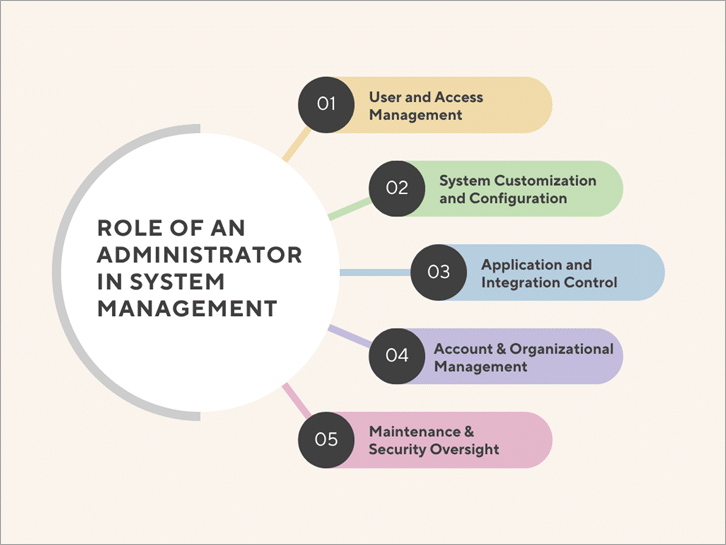Administrator: A Core Role in System Management
An Administrator is a highly privileged user within a software system who has full control and authority over its configuration, user access, and overall management. Their primary role is to ensure the system is secure, functional, and aligned with the company’s business needs.
Related Links:
Key Responsibilities and Capabilities of an Administrator:

User and Access Management:
They serve as the central authority for Role-Based Access Control (RBAC). They have the power to grant, modify, and revoke user access and privileges to specific features, reports, or documents, ensuring users only see what they need to.
System Customization and Configuration:
Administrators can create and customize fields, templates, and workflows within the software to adapt it to the company’s unique business processes and reporting requirements.
Application & Integration Control:
They manage and oversee all integrated applications and third-party tools, determining which connections are active and how they function within the system.
Account & Organizational Management:
They have the ability to create, rename, and manage organizational units within the software, maintaining the company’s structure within the platform.
Maintenance & Security Oversight:
They are responsible for tasks like adding or removing users, resetting passwords, and managing notification preferences to ensure data security and operational efficiency.
In essence, the Administrator is the custodian and architect of the software, holding the highest level of permissions to maintain the system’s integrity, security, and utility for the entire organization.

